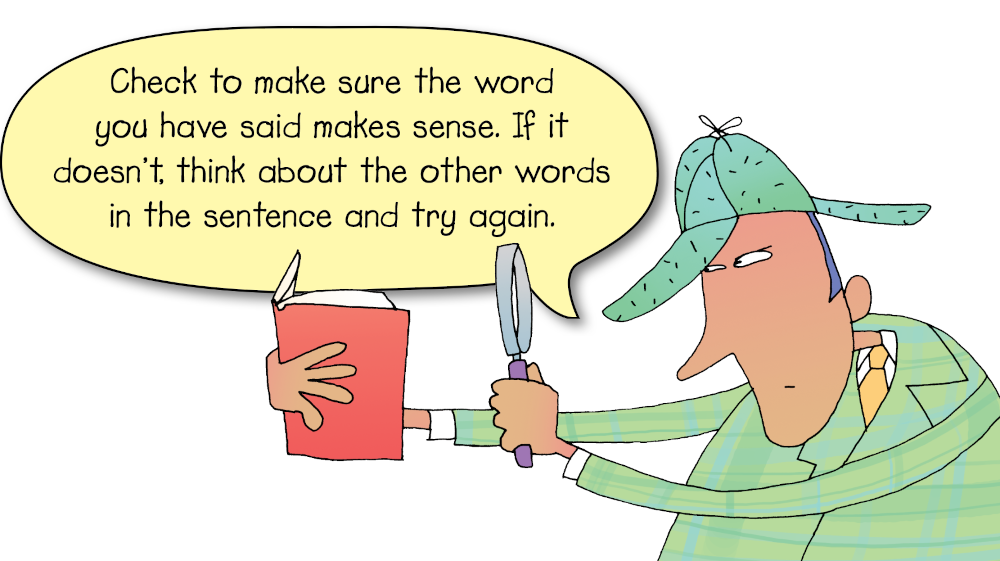WT 231
Page 231
Reading New Words
When you see a word you can’t read, use the following reading strategies to help you.
Read and Check
First, look at the letters and letter patterns in the word you can’t read. Next, say the sound made by each letter or letter pattern. Then blend the sounds into a word you know. The following tips can help you.
🟪 Look for consonant blends, such as “str” in string. Say the blend and then add the remaining sounds of the word.
🟪 Use what you know about vowel pairs, such as “ai” in paid and rain.
🟪 Watch for r-controlled vowels, such as “ir” in first or “air” in pair.

WT 232
Page 232
Look for Word Parts You Know
Longer words often have little words or word parts in them. For example, if you can read the little word end, you can probably read the words mend, fend, lend, blend, and ending.
If you can read the word part ight, you can probably read the words light, plight, and delight.
Look for Syllable Breaks

Look for Prefixes, Roots, and Suffixes
Longer words may be made up of smaller parts that you know.

Tip
Your handbook includes the meanings of many prefixes, roots, and suffixes. (See pages 240–249.)
Look for Compound Words
Many big words are made up of two smaller words. We call these compound words. Here are a few examples: sidewalk, farmyard, and basketball.